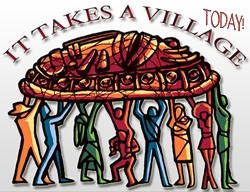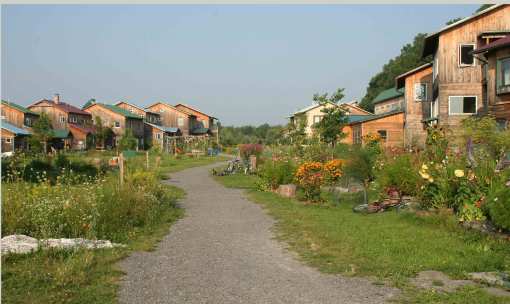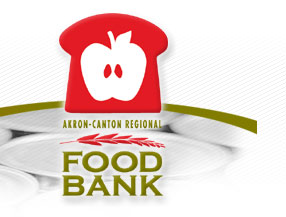I am proud and honored to be promoting the first Ecovillage in Akron, and the second Ecovillage to come to Ohio following the successful run of Cleveland’s Detroit Shoreway Ecovillage.
Today’s Ecovillages are not the resurrection of the hippie communes of the ’60s and ’70s, rather they are designed for business professionals that believe in their community, care about their local economy and have a burgeoning consciousness about the condition of our planet. It’s a way of life that turns the past “insular” way of living– inside out!
My goal is to educate, propogate and participate directly in the Ecovillage. First, let’s get through the Ten Most FAQs about the Ecovillage of the new 2010 decade:
 1. What is an Ecovillage?
1. What is an Ecovillage?
Ecovillages are intentionally-designed communities “intended” to be socially, economically and ecologically sustainable. They can be urban or rural communities that strive to integrate a supportive social environment with a low-impact way of life. They most often adapt the co-housing model with a living arrangement that combines private living quarters with common dining and activity areas in a community whose residents share.
2. What are the common principles of an Ecovillage?
There are five:
1. They are not government-sponsored projects, but grassroots initiatives.
2. Resident members value and practice community living.
3. Resident members are not overly dependent on government, corporate or other centralized sources for water, food, shelter, power and other basic necessities; rather, they attempt to provide these resources themselves.
4. Resident members have a strong sense of shared values, often characterized in spiritual terms.
5. They often serve as research and demonstration sites, offering educational experiences for others.
3. What is the physical design structure unique to an Ecovillage?
Ecovillages integrate various aspects of ecological design including ecological building, alternative energy, green manufacturing and production, permaculture and community building practices.
Typically, homes face each other across common courtyards and pedestrian walkways. Parking is kept to the periphery or basements so the automobile doesn’t interfere with social interaction. And a common house and common green are centrally-located.
 4. What living space is shared vs. private?
4. What living space is shared vs. private?
The common house, though owned by all, is used by the community members as an extension of their living space. It always includes a kitchen and dining room, and meals together with neighbors on a regular basis generally serving as “the glue” that holds the community together. Beyond that there are often shared laundry facilities, children’s playrooms, classrooms, workshops, music and crafts rooms, exercise facilities, a library, etc.
Private space is generally quite private, including kitchens, living rooms and bathrooms that you would expect in a single-family home; and when possible, some private outdoor space as well. There is often intermediate space like porches and entry courts that are semi-private, and gathering “nodes” where a few individuals can meet.
5. How much decision-making power do resident members have in their community?
With the “co-housing” model, community participation is critical in planning, design and ongoing management. This consists primarily of professionally-led design workshops where early members reach consensus on design programs for the site, common areas and private living space, budgets, covenants, bylaws, formal operating agreements and ongoing management and maintenance of both the social and the physical community after establishment.
A final structure is governance for community. All cohousing communities utilize some form of consensus decision making. Most also pay close attention to non-violent conflict resolution. As a practical matter, however, once a degree of trust has been established, committees are often empowered to make decisions in specific areas on behalf of the community so that coming to consensus does not become overly burdensome.
 6. Isn’t Ecovillage just a code word for hippie commune?
6. Isn’t Ecovillage just a code word for hippie commune?
To many, the blending of community and ecological principles brings to mind the hippie communes of the1960s-70s. These communes were known for their clothing optional policies; opium, marijuana and hemp agricultural crops; and demonstrations of free sexual escapades in common spaces. The majority of today’s Ecovillages are for mainstream professionals seeking to build community, extend family relationships, provide a supportive social network, be productive and become more environmentally friendly and conscious.
7. Are Ecovillages becoming a more acceptable living alternative?
Ecovillages emerged out of the intentional communities and cohousing movement originating in Denmark in the 1960s. It then spread to North America during the late 1970s. Modern-day Ecovillages are currently moving out of their embryonic grassroots stage, now recognized as one of the most promising trends in sustainable community living. And as they begin to enter the mainstream and become more accessible, Ecovillages are becoming an ideal more people can share.
According to the nonprofit Global Ecovillage Network, some 420 eco-villages exist in both urban and rural settings around the world today. Today, an estimated 110 Ecovillages are either being planned or built in the U.S., evenly split between East and West.

Ecovillage at Ithaca
8. Are there any Ecovillages that have proven to be successful?
There are many successful models in the U.S. that are making money for developers and sponsorship organizations, improving their communities and hosting happy, satisfied residents.
Examples include the Ecovillage at Ithaca in the Finger Lakes region of Upstate New York that includes two 30-home neighborhoods, an organic vegetable and berry farm, a nature area and two community houses where residents gather for shared meals. It is in its third phase. The Los Angeles Eco-Village, three miles west of downtown, operates Bicycle Kitchen, a nonprofit group that encourages cycling; gardens and fruit trees; beautification projects that use red-clay brick salvaged from the 1994 earthquake; and other eco-sensitive practices. Dancing Rabbit, set in the hills and prairie of northeastern Missouri, features buildings made of natural materials, 60 acres of woods, organic gardens and a food coop.
9. Is an Ecovillage affordable to the average person?
Cohousing communities in the U.S. have received most of HUD’s innovations in home ownership awards over the last 10 years, plus many other accolades, especially for green features. But the movement has failed so far to cross over into the affordable housing sector in a big way like it has in Europe.
Individual cohousing communities have had some success in attracting subsidies both from within their more affluent memberships and from government and philanthropic organizations to expand affordability of some units to a wider spectrum of incomes.
Most low to moderate-income housing in the U.S. is rental housing supported by low-income tax credit programs. As Ecovillages containing multiple cohousing communities are developed, new stimulus dollars are available to both lower costs and to enhance common features available to everyone, as well as to branch out into community-based mixed-income, mixed-use development.
10. Will Akron have the first Ecovillage in Ohio and when will it be built?
No. Cleveland’s Detroit Shoreway Ecovillage, two miles west of downtown, is one of the most successful urban models in the U.S. The Cleveland Ecovillage was founded through an innovative partnership involving nonprofit organizations, the city, the regional transit authority, private developers, and neighborhood residents. It is a nationally recognized and celebrated demonstration project that showcases best practices in green building, transit-oriented design, urban agriculture and societal inter-dependence. Over the last ten years the Cleveland Ecovillage has proven that sustainability can be used as an organizing principle for urban redevelopment and community organizing.
Two others are found in the national Ecovillage directory—one in Pomeroy, the other in Cincinnati—but little is known about them.
It will be built in central Akron with a Passive House focus within the next two years.










![FoodBanksml[1] FoodBanksml[1]](https://goingreenguy.files.wordpress.com/2009/11/foodbanksml11.jpg?w=510)

![7981027871_cc1[1] 7981027871_cc1[1]](https://goingreenguy.files.wordpress.com/2009/11/7981027871_cc11.jpg?w=300&h=216) Here are some recommended action steps for UA college students to get the grade up from the Sustainable Endowments Institute :
Here are some recommended action steps for UA college students to get the grade up from the Sustainable Endowments Institute :![200800[1] 200800[1]](https://goingreenguy.files.wordpress.com/2009/11/2008001.jpg?w=510)
![2006-Myers-Motors-NMG-S-1600x1200[1] Myers Motors rig was on display at E4S entrepreneurial showcase in Akron](https://goingreenguy.files.wordpress.com/2009/07/2006-myers-motors-nmg-s-1600x12001.jpg?w=300&h=225)



